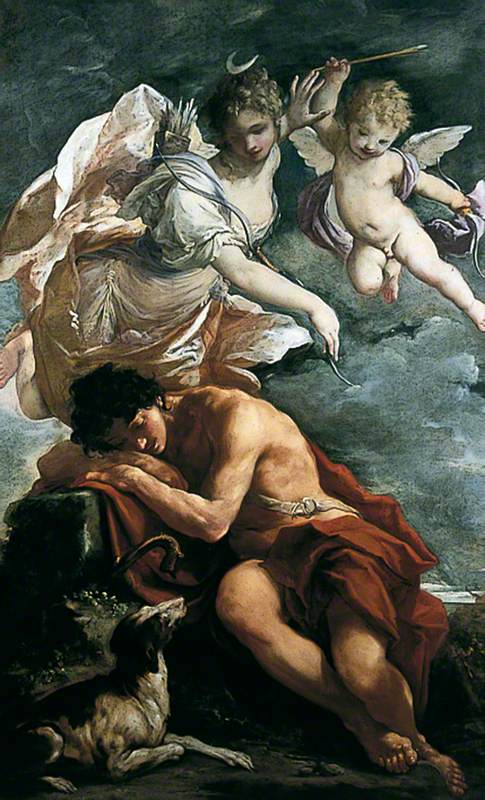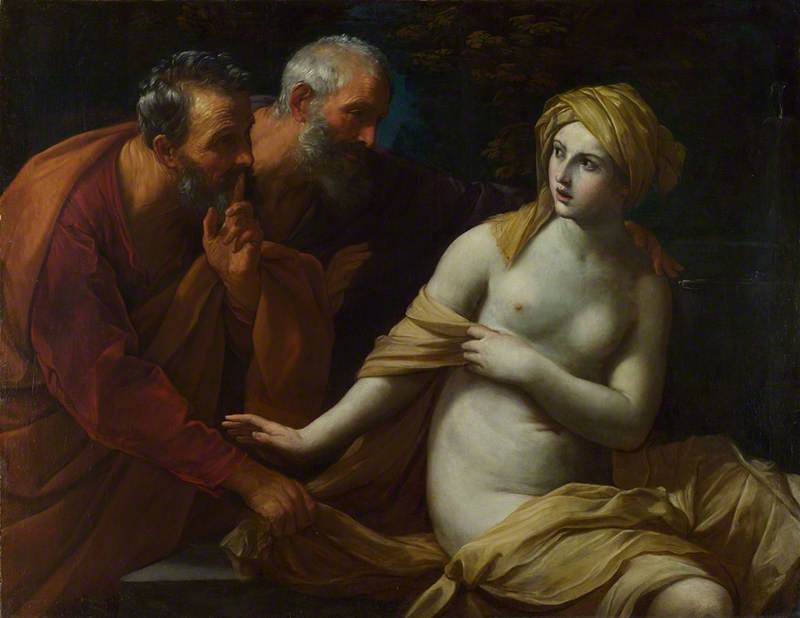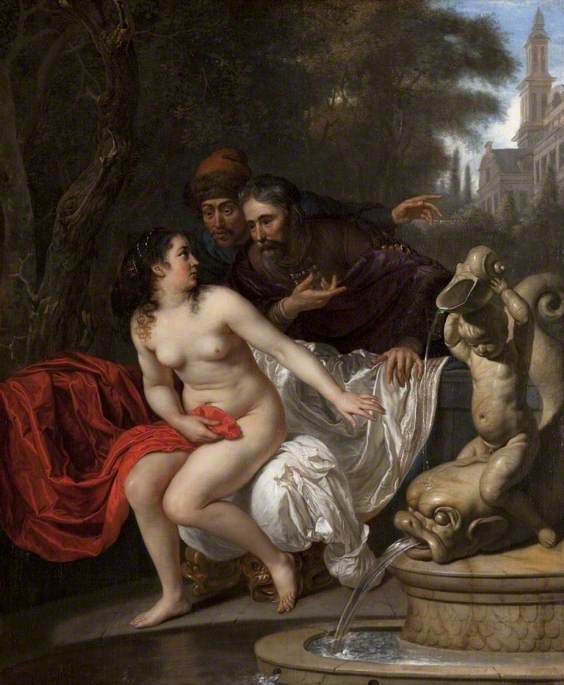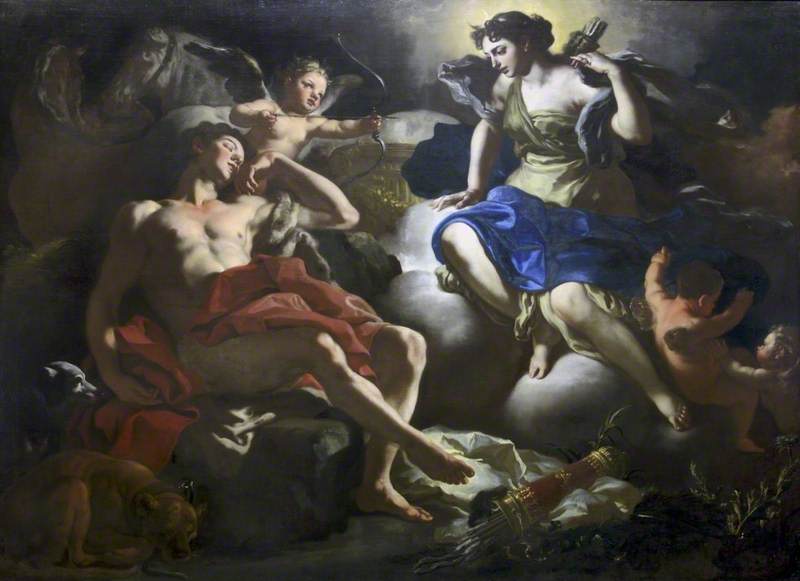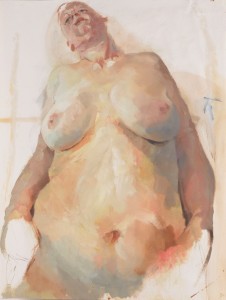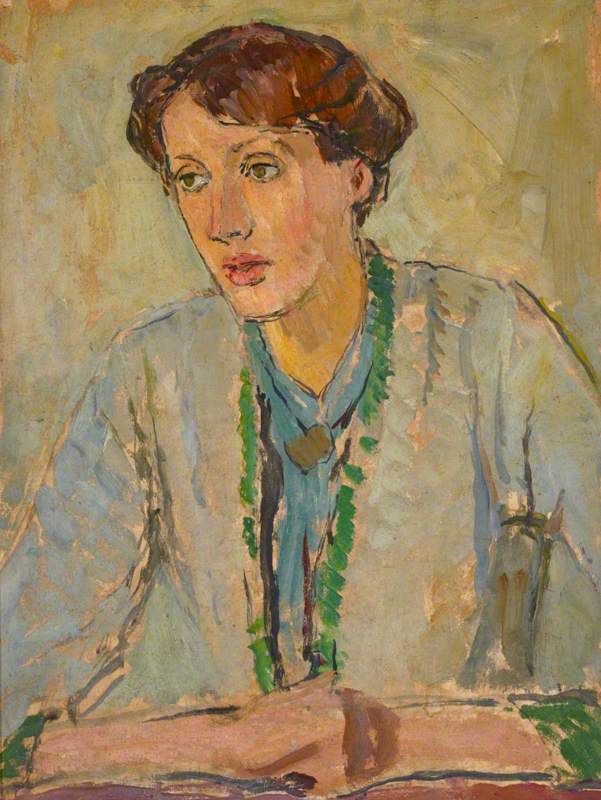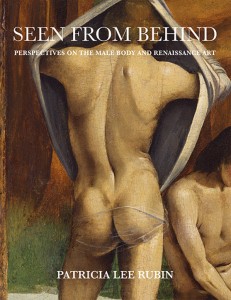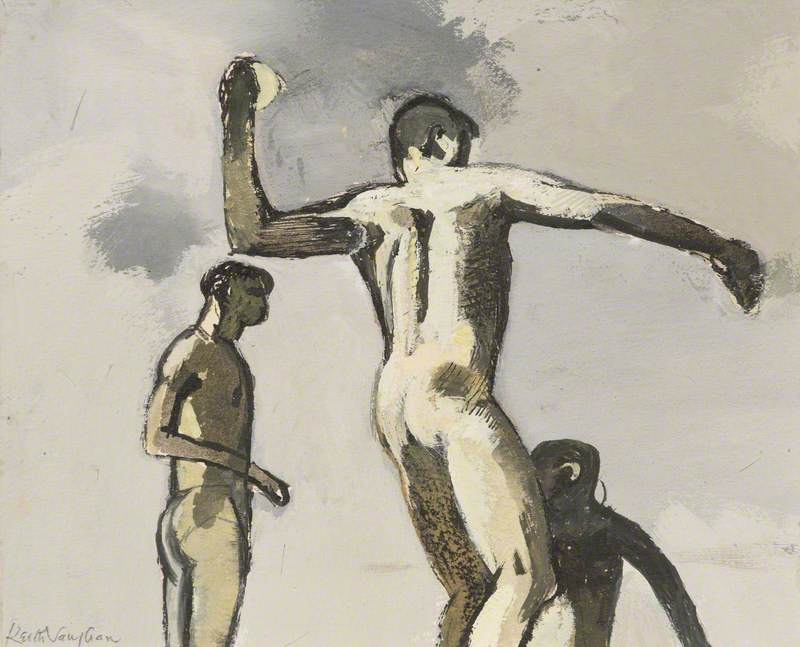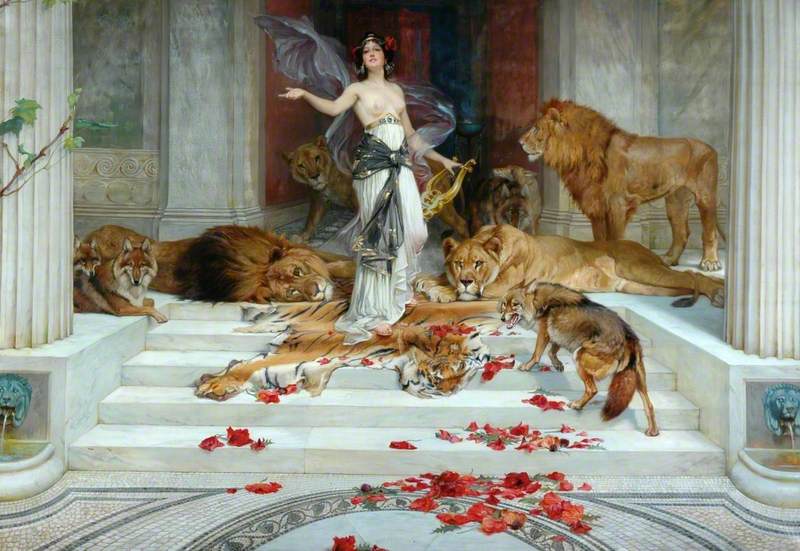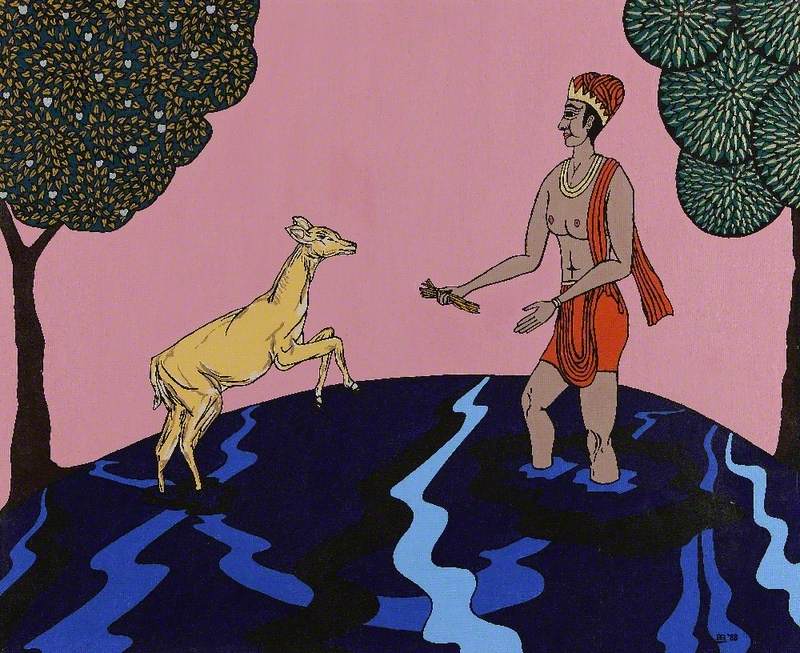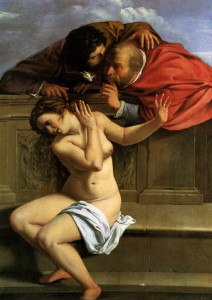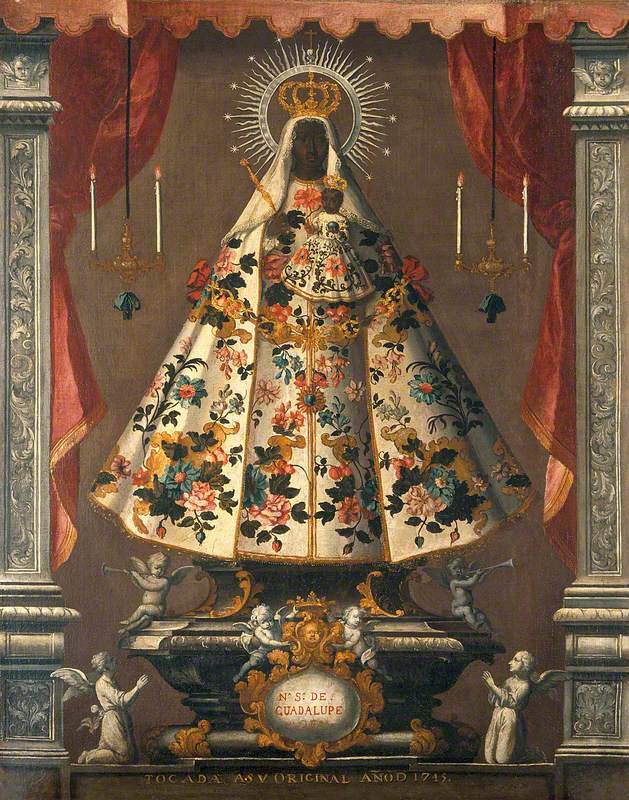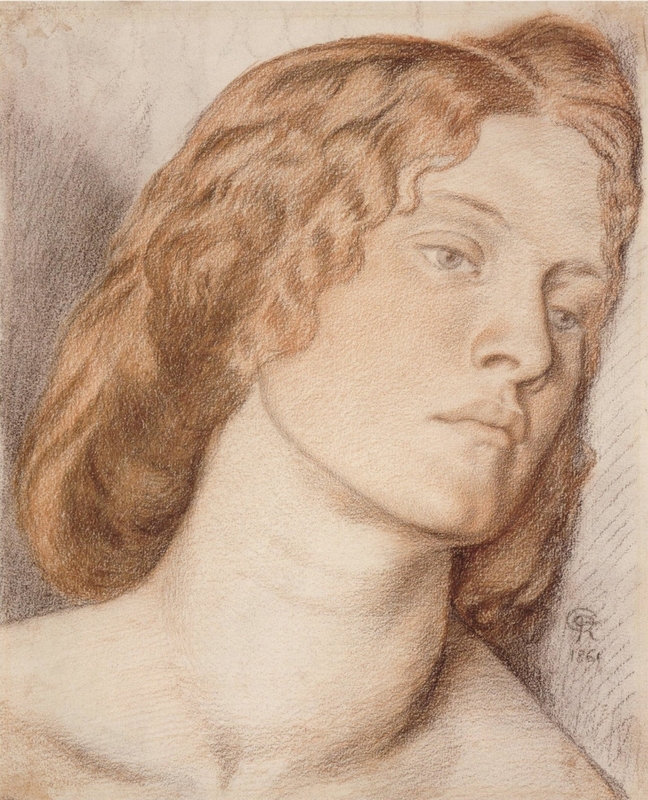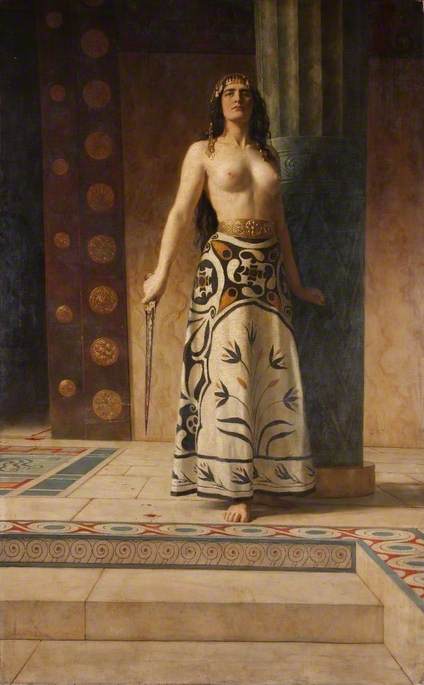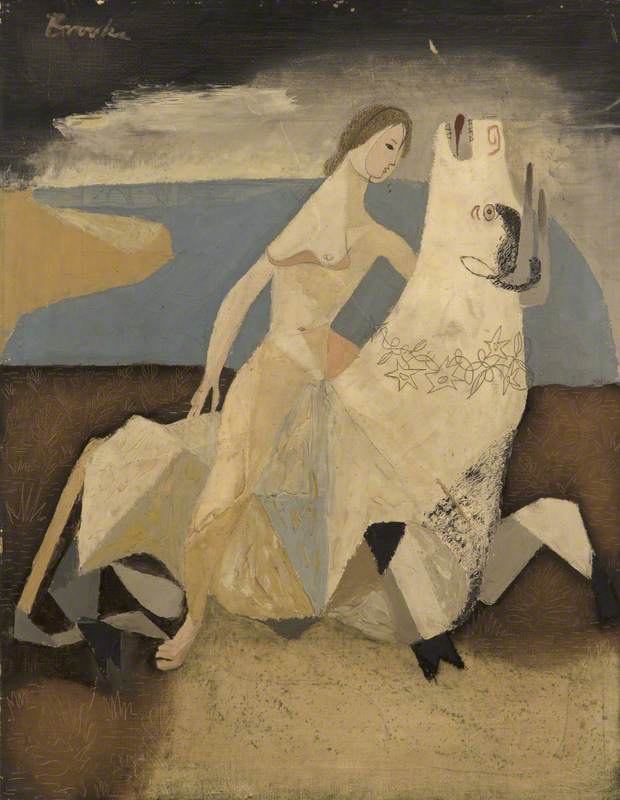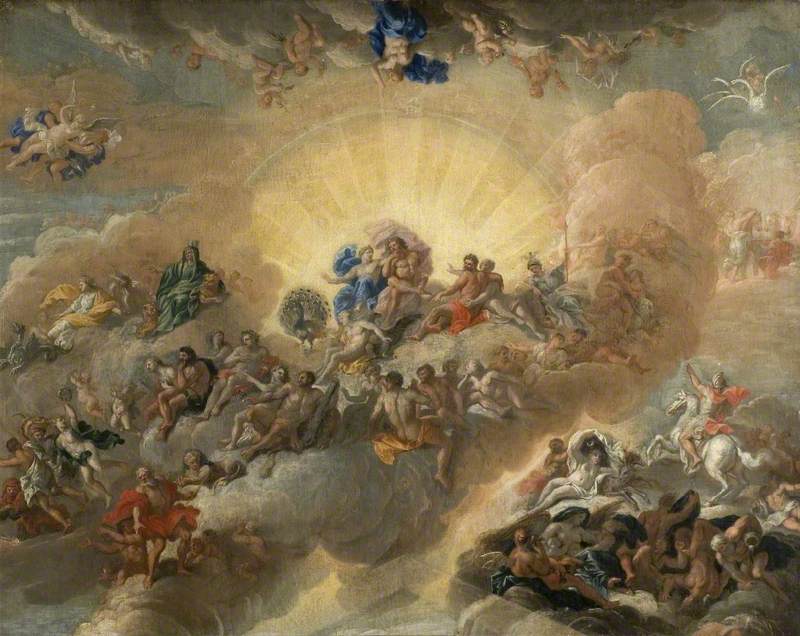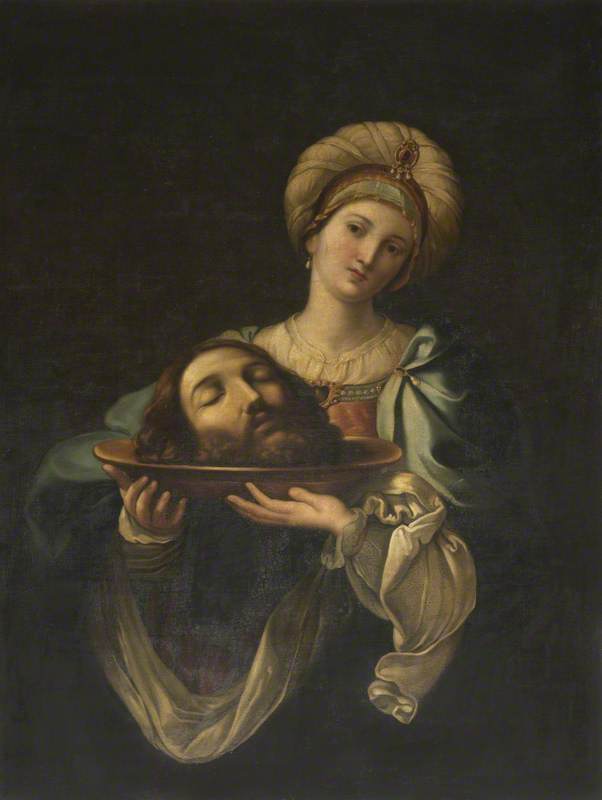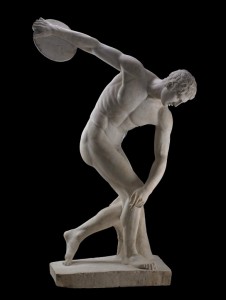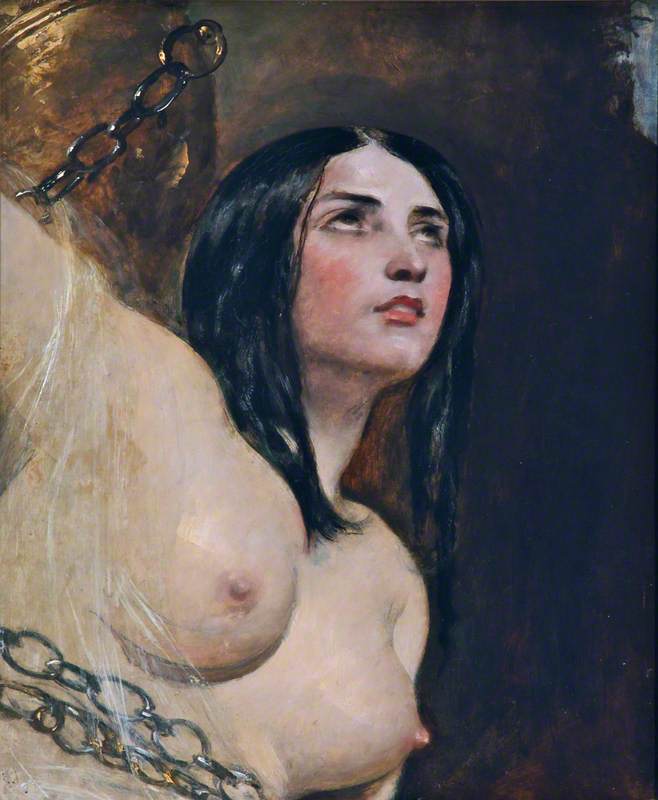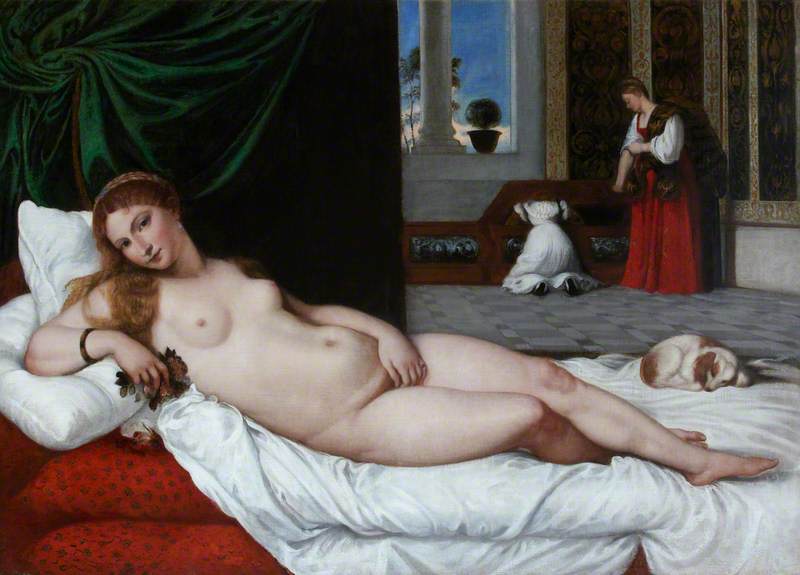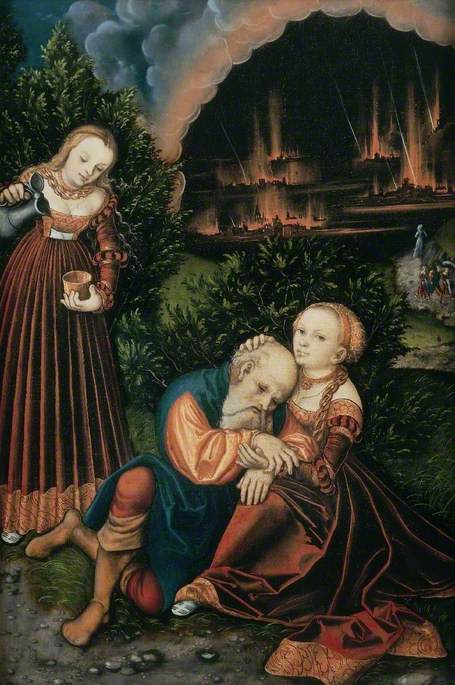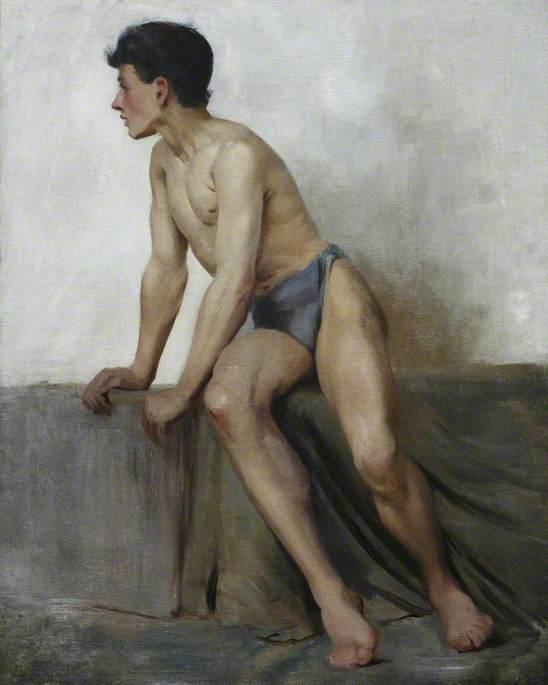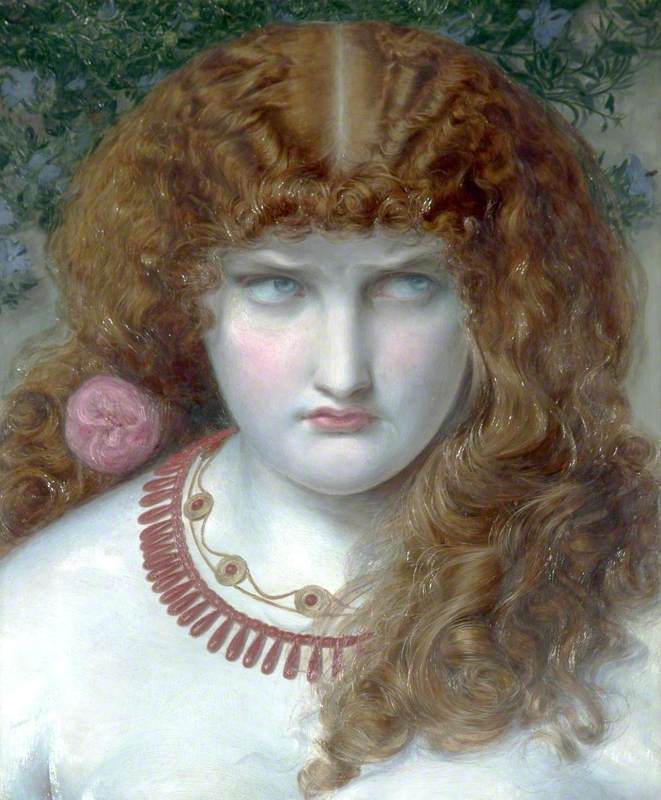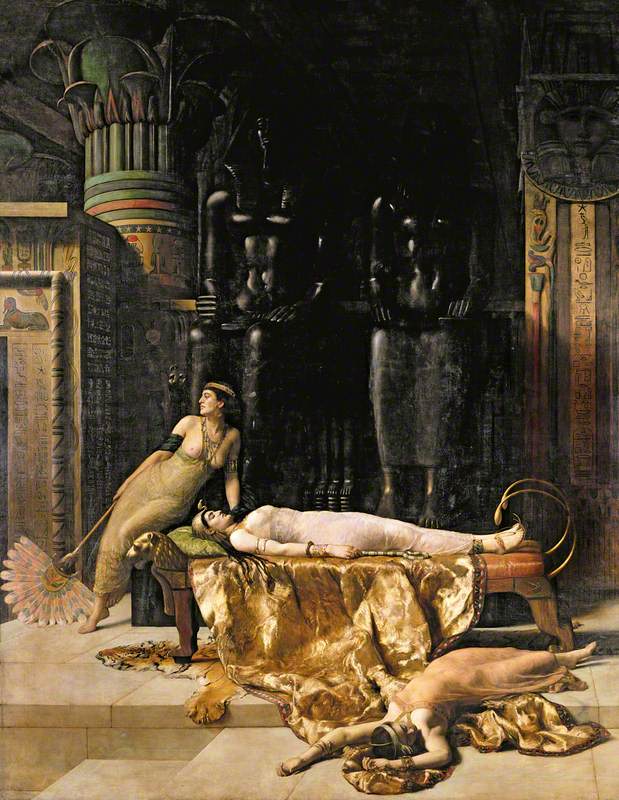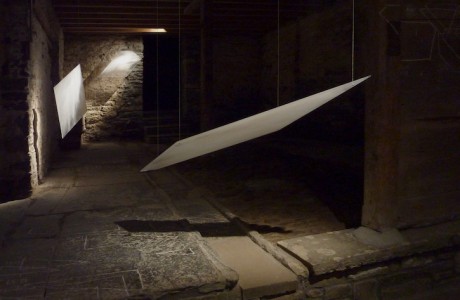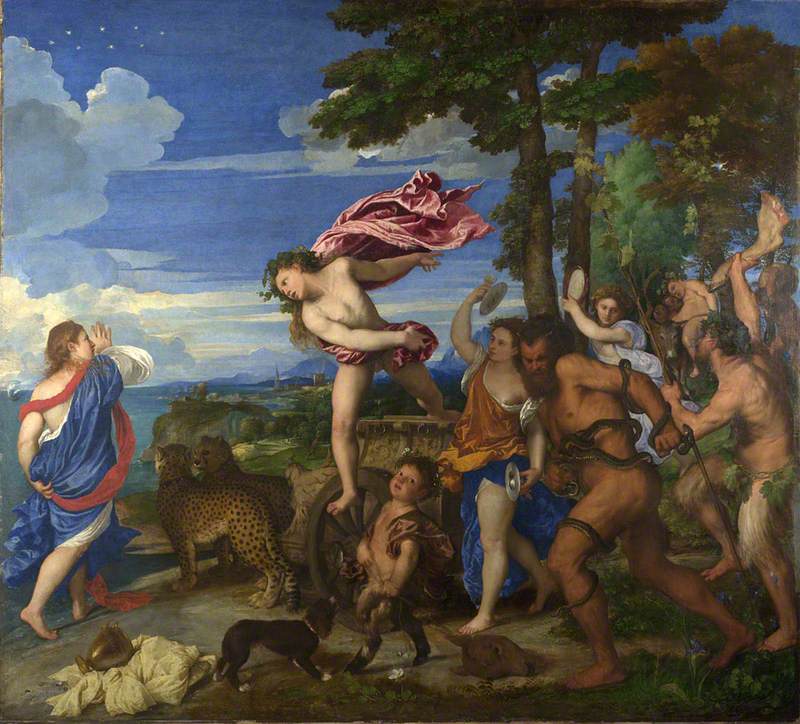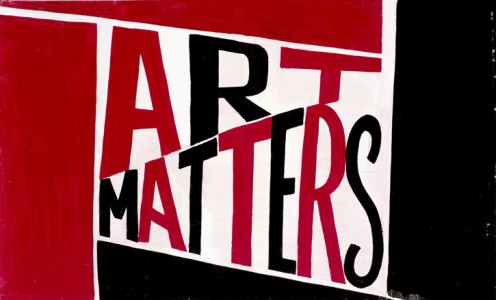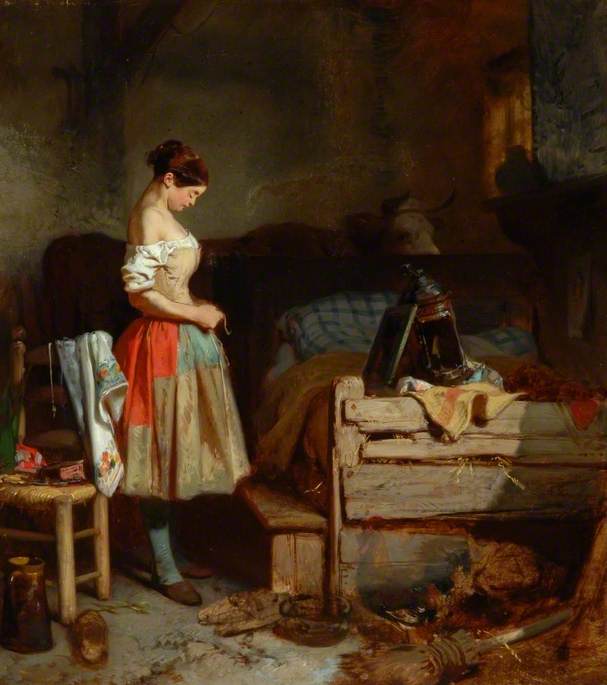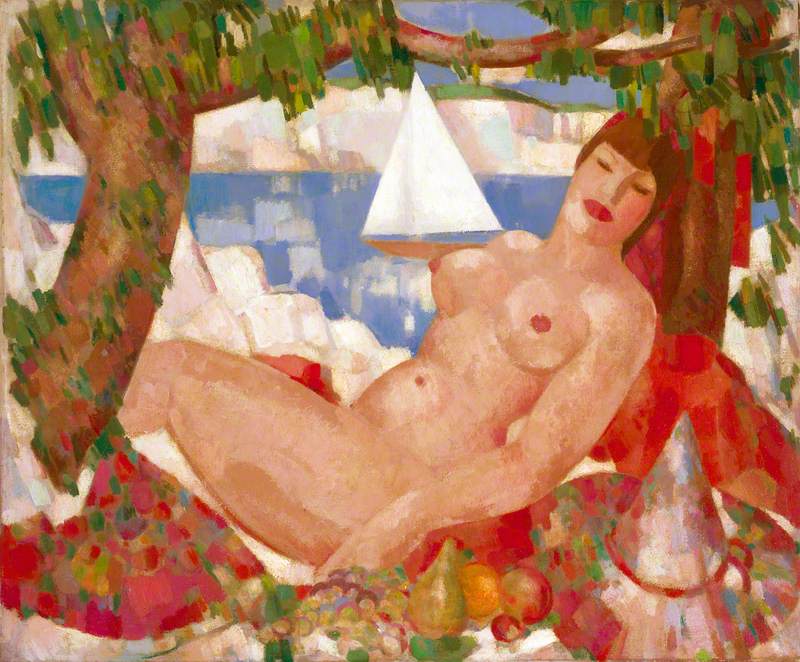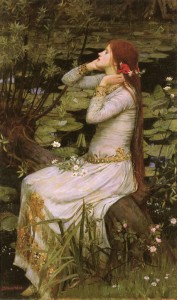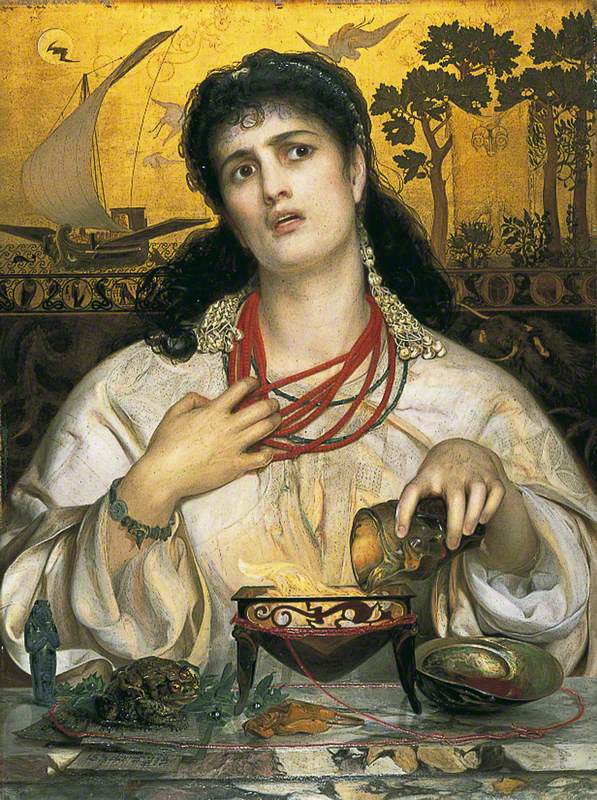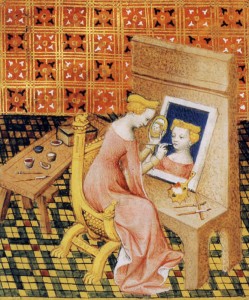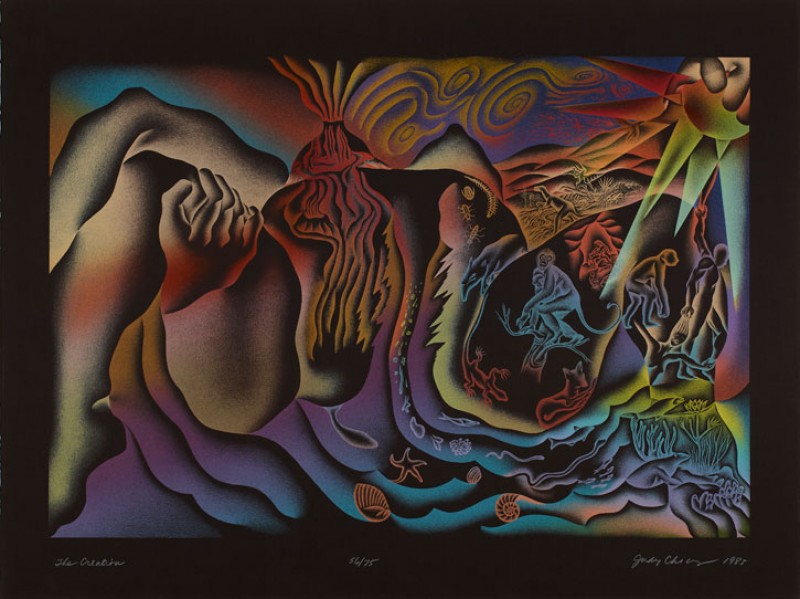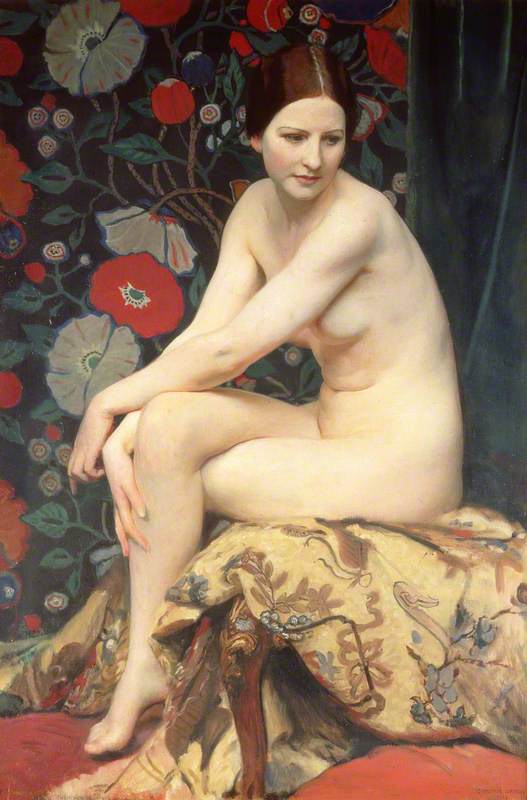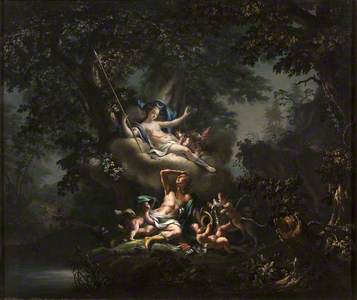In the painting by Giovanni Antonio Burrini presented here, a young man is depicted sleeping against the backdrop of a cloudy, moonless night. Floating above him, with a quiver full of arrows and a bow in her hand, is a female presence with pale skin and rosy cheeks. Without taking her eyes off the sleeping youth, she reaches for cupid's arrow, leaving us with no doubt that the painting portrays an act of love.
The title clearly states that the painting depicts Diana and Endymion, but who are they?
I first came across the mythical tale of Diana and Endymion in high school and it has been imprinted in my memory ever since. As the crescent moon which hovers over her hair implies, Diana is a lunar deity and in Roman mythology she is also known as the goddess of hunting and fertility.
According to Pliny the Elder, Endymion was an astronomer and the first human to observe the moon, which he did with such passion and zeal that not a fact about it eluded him. Overwhelmed by Endymion's beauty upon visiting him one night when he was asleep, Diana begged Zeus to grant Endymion eternal life so that their love could last forever. With the treachery that defines an ancient god, Zeus responded to Diana's request by putting Endymion into an endless slumber. Unaffected by Zeus's action and still in love, Diana would mount her moon chariot and visit Endymion once a month, thus leaving the sky without a moon.
This is the story I grew up to know, but years later I found out that there is no general consensus about Endymion's identity and the endless sleep in which he has befallen. In his book The Greek Myths, Robert Graves mentions that Zeus had either punished Endymion this way due to suspicions about an affair between him and Hera – Zeus's wife – or it was Endymion's own choice and a gift by Zeus who granted him everlasting youth and the ability to sleep whenever and for as long as he wished.
The latter interpretation is clearly represented in a painting of Diana and Endymion by Giovanni Battista Innocenzo Colombo, in which Endymion is depicted awake and looking directly at Diana.
Regardless of the version that one chooses to accept, the myth is commonly perceived as an allegory of platonic love, since the spiritual attraction has preceded, and in this case even surpassed, physical lust.
However, looking at paintings of Diana and Endymion there is an interesting observation concerning the way that each of the characters is portrayed to be made.
In feminist theory, there is a concept known as the 'male gaze' which refers to female objectification in the visual arts. The theory stresses that women have been repeatedly depicted in ways to make them appear vulnerable, desired, seductive and subjugated. The intention behind women's degrading representation being none other but to please the male viewer, collector or, in more recent centuries, even the male consumer.
Take for example Guido Reni's painting Susannah and the Elders. Susannah is predominantly naked and looking away, thus avoiding confronting the viewer with direct eye contact. At the same time, she is shyly attempting to cover herself with a lustrous garment in a way that reinforces her vulnerability and submissiveness.
The aforementioned painting is only one among countless other examples that perpetuate this image. From Botticelli's Birth of Venus to lingerie advertisements, women are often represented in ways that conform to this pattern.
However, if we compare Francesco Solimena's painting of the mythical couple Diana and Endymion to Jacob van Loo's version of Susannah and the Elders, we will be surprised to find out that the similarities between Endymion and Susannah are striking. Both are nude, with only a small part of their bodies concealed by a red satin sheet. At the same time, their pale skin and rosy cheeks indicate health and youth that make them more attractive, and perhaps even seductive on account of being irresistible.
Undeniably so, in Francesco Solimena's Diana and Endymion the elements of the male gaze are not attributed to the female but the male subject. Observe how Endymion is depicted in contrast to Diana in Solimena's painting. She is fully dressed, sitting above him in a way that implies superiority. On the other hand, he is unaware of being watched and fully exposed to Diana and the viewer's 'gaze'.
Therefore, has the painter intentionally tried to capture the power of the female character from the story? Is Endymion painted in a way to appeal to the female gaze, or are we simply witnessing a stereotypical female nude disguised in the form of a man?
Considering that the male gaze concept and feminist artworks appeared for the first time over three centuries after the painting in question, and that female patrons in the Renaissance – though existent – were rare, it appears to be more likely that Solimena did not paint Endymion this way for any other reason than to appear irresistibly alluring to a deity. Consequently, with what is considered desirable being predefined by a tradition of the female nude through the eyes of men, Endymion's appearance is arguably the result of an artist merely following a pattern that had proven to work.
Nevertheless, the undeniable focus on Diana and her eminence that almost all paintings of the mythical couple display, could potentially stem from the origin of the myth. The story was originally written by the female lyric poet Sappho who resided in the Greek island Lesbos during the sixth century BC. Sappho's love and respect for other women in her community, which is evident in her poetry, transcended into all variations of the story and the paintings made to illustrate it too.
Next time you are visiting a museum, try to observe how women have been depicted in art through history. What are the differences and similarities of female representation that you can notice from one art movement to another, and what conclusions can you draw from these observations?
Stefani Bednarova
